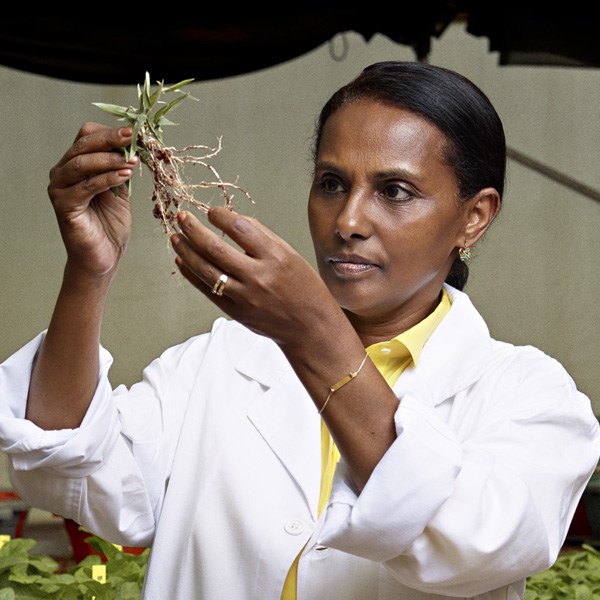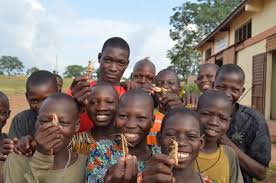 Interview with Dr. Segenet Kelemu, General Director and CEO of the International Centre of Insects Physiology and Ecology (ICIPE)
Interview with Dr. Segenet Kelemu, General Director and CEO of the International Centre of Insects Physiology and Ecology (ICIPE)
Give us a brief panoramic on what you do at ICIPE
Icipe was established in 1970, with the mission to help alleviate poverty, ensure food security and improve the overall health status of peoples of the tropics, by developing and extending management tools and strategies for harmful and useful arthropods, while preserving the natural resource base through research and capacity building. Our mode of operation is strongly rooted in a multidissciplinary approach and structured around a 4 H(ealth) paradigm (Animal Health, Environmental Health, Human Health and Plant Health) that are supported by various units including capacity building and institutional development, behavioural and chemical ecology, arthropod pathology unit, biosystematics, molecular biology and bioinformatics, social sciences and impact assement, technology transfer and others. Since its founding,Icipe has remained committed to developing and disseminating environmentally safe, affordable, acceptable and accessible tools and strategies to control insect pests and disease vectors. Icipe’s mandate further extends to the sustainable conservation and utilisation of Africa’s rich biodiversity. We are the only international institution in Africa working primarily on arthropods.
A key strategy of Icipe is to remain alert to emerging developmental challenges facing Africa, and then identify opportunities to use insect science to respond to such problems. In accordance, the Centre has established itself as a leader in the globally emerging insects for food, feed and other uses research agenda. Because of three interconnected issues (food and nutritional security, animal feed and the environment), this topic has captured the imagination of the global scientific community, donors, and the general public alike.
What’s the contribution to the food unsafety in Africa given by insects today?
Human health and food security are impacted in many ways by insects. As key pests of crops across the African contient, they significantly constrain crop productivity, thereby affecting food security. The recent invasion by fall armyworm is a typical illustration. In the absence of sustainable management options for these insect pests, especially in high value horticultural crops, growers depend a lot on pesticides for their control, which translates into food safety hazards and environmental pollution. On the beneficials´ side, insects contribute significantly to the key ecosystem services that relates to crop production such as pollination and recycling of organic wastes. More than 75% of the crops that are consumed by communities in Africa and elsewhere are pollinator dependent.
The growing world population, which is now standing at around 7.4 billion, is projected to increase to 9.6 billion by 2050, pushing the demand for food up by 60%. This population surge, combined with urbanisation, climate change, diminishing land and water resources, over- and undernutrition, and persistent poverty, has created uncertainties and pressures on current food and economic systems. FAO provisional estimates of undernourishment around the world in 2015 state that one in every nine people on our planet were undernourished in 2014–2016, and that the majority of hungry people (780 million), live in the developing regions (The State of Food Insecurity in the World 2015). The impact is especially significant in sub-Saharan Africa (SSA), where one in every four people (23.2%) of the continent’s population are hungry (The State of Food Insecurity in the World 2014).
In Africa, Asia and Latin America, insects are traditionally consumed as food providing key nutrients, especially proteins and micronutrients. Insects can provide a solution to the undernourishment in this region, because they reproduce quickly, and are valuable sources of protein, minerals and vitamins that are essential for human development. Recent observations show that edible insects have an outstanding protein quality. Several essential amino acids, especially lysine, threonine, and methionine, which are limited in cereal- and legume-based diets, are also present in adequate quantities in edible insects. Compared to conventional sources, edible insects are rich in zinc. For instance, while 100 g of beef contains only 12.5 mg of zinc; the same amount of palm weevils contains 26.5 mg.
What’s the role of people education and information in your projects?
Our capacity building in the edible insect area plays four major roles: (1) building a critical scientific expertise on the continent through postgraduate trainings; (2) create jobs and generate income; (3) create awareness on the potential of edible insects by raising their profile to increase demand and consumer willingness to pay, and (4) inform, develop and implement policy and standards to enable and guide the use of edible insects.
What’s the contribution to the food security in Africa that edible insects can give?
Promotion of insect consumption will directly improve on food security and health particularly in children under 5 years and women at reproduction age. Protein-energy malnutrition is highly prevalent among young children. Furthermore, micronutrient deficiencies, particularly iron, zinc, iodine and vitamins, are alarmingly high among pregnant women and preschool children. Edible insects are rich sources of protein and essential amino acids, energy and micronutrients of public health significance, and can therefore, play a key role in filling the food and nutrition gap.
Furthermore, although the poultry, fish and pig industries are the fastest growing agri-businesses in many developing countries including in Africa, poor availability and high cost of feed protein additives—which include soybeans, fish oil, fishmeal, seed cakes and several other grains—hinder their full potential. Feed costs are estimated to represent 60–70% of the poultry, fish and pig production costs. In addition, it is becoming unsustainable to rely on fishmeal, soybean and cereals as protein sources in feed production, as humans also consume soybeans and cereals. In addition, farmland for cultivation is diminishing; and, because of overexploitation, the small pelagic forage fish from which fish meal and fish oil are derived are declining. Thus, insects represent a substitute for livestock feed, due to their protein content and amino acid profiles.
There is a global quest of incorporating ‘greening’ measures into agricultural systems, to mitigate climate change and conserve biodiversity. Compared to other livestock, insects are more efficient in converting organic matter into protein, leading to lower greenhouse gas emissions. In addition, black soldier fly larvae, also used in composting and sanitising household and agricultural wastes, emit only a small amount of carbon dioxide and no other greenhouse gases. Insect farming thus benefits the environment and can mitigate climate change.
How the relationship between insects and humans is going to change in the near future?
Despite these clear reasons described above, a number of challenges stand in the way of integrating insects as a sustainable component in addressing food, nutritional and feed security, and transitioning towards a ‘greener’ agriculture. Although a range of insect species have traditionally been part of people’s diets in many countries across Africa, Asia and Latin America, they have a minimal understanding of the contribution of insects to food and nutritional security. Moreover, edible insects are often harvested in an uncontrolled manner from the wild or through semi-domesticated informal set-ups. Ultimately, this can lead to habitat destruction and even extinction of species. There is also lack of a proper institutional framework to oversee and document edible insects.
Proper research is required to gain solid understanding of appropriate insect species that can be mass-reared, including knowledge on breeding, production management, and ways to pre-empt and control diseases and environmental risks. Moreover, to succeed, mass-rearing of insects must appeal to entrepreneurs and investors across the value chain as an emerging industry. The sector also has to be supported by regulations and policy frameworks encompassing food safety and trade issues at national, regional and international levels. The initiatives should also be inclusive; for instance, by deliberately enabling the participation of women and the youth.
Do you think that edible insects could be an important food supply and an income generator for people in the emerging countries?
I have no doubt about this. Take for instance grasshopper in Uganda which has a considerable demand but only available seasonally. A starter company that was packaging these insects in 100 g was selling the package at $3 dollars and this is in high demand. The company however could not operate yearly due to lack of supply.
Futhermore, the market size for protein feed in the livestock and fish sector is vast for insect rearing business across the continent and elsewhere.
Since identifying insects for food and feed as a strategic research area in 2013, icipe is helping to address various challenges. In 2014, the Centre compiled an inventory titled “African edible insects for food and feed: inventory, diversity, commonalities and contribution to food security,” which was published in the new Journal of Insects as Food and Feed. icipe also established the Insects for Food, Feed and Other Uses (INSEFF) programme, as the platform for consolidating and strengthening its various activities.
Icipe is also conducting various studies on edible insects. For instance, in a joint paper published in PLoS ONE journal on 13 May 2015, researchers from the Centre, the Jomo Kenyatta University of Agriculture and Technology, and United States Department of Agriculture/Agricultural Research Service (USDA/ARS) showed that the desert locust, Schistocerca gregaria, contains a rich composition of compounds known as sterols, which have cholesterol-lowering properties, thereby reducing the risk of heart disease. A second study by icipe, published in PLoS ONE journal on 5 January 2015, confirmed that the edible stink bug, which is known scientifically as Encosternum delegorguei Spinola, and in some parts of southern Africa as thongolifha, contains vital nutritional components. The study also recommended improved care in the harvesting and storage of the edible stink bugs, to safeguard their nutritional value and prevent contamination by harmful compounds.
The Centre looks forward to building on its progress so far, by working with existing and potential partners to unlock the immense, yet untapped potential of insects as food, feed, and as part of a greener agriculture.






